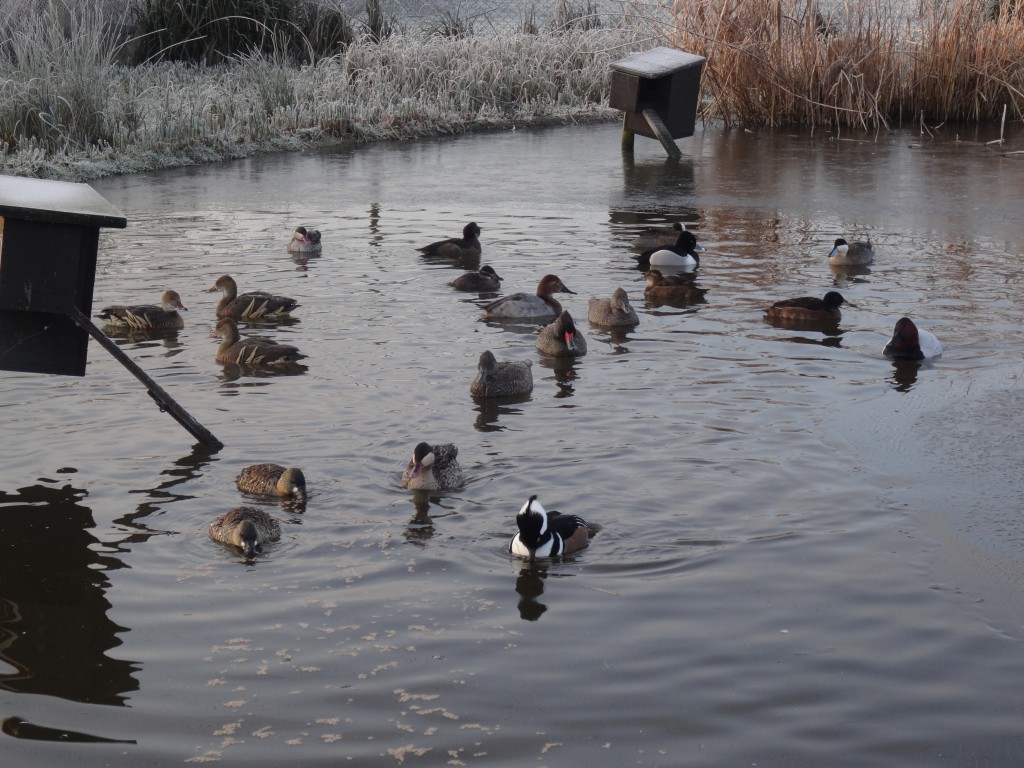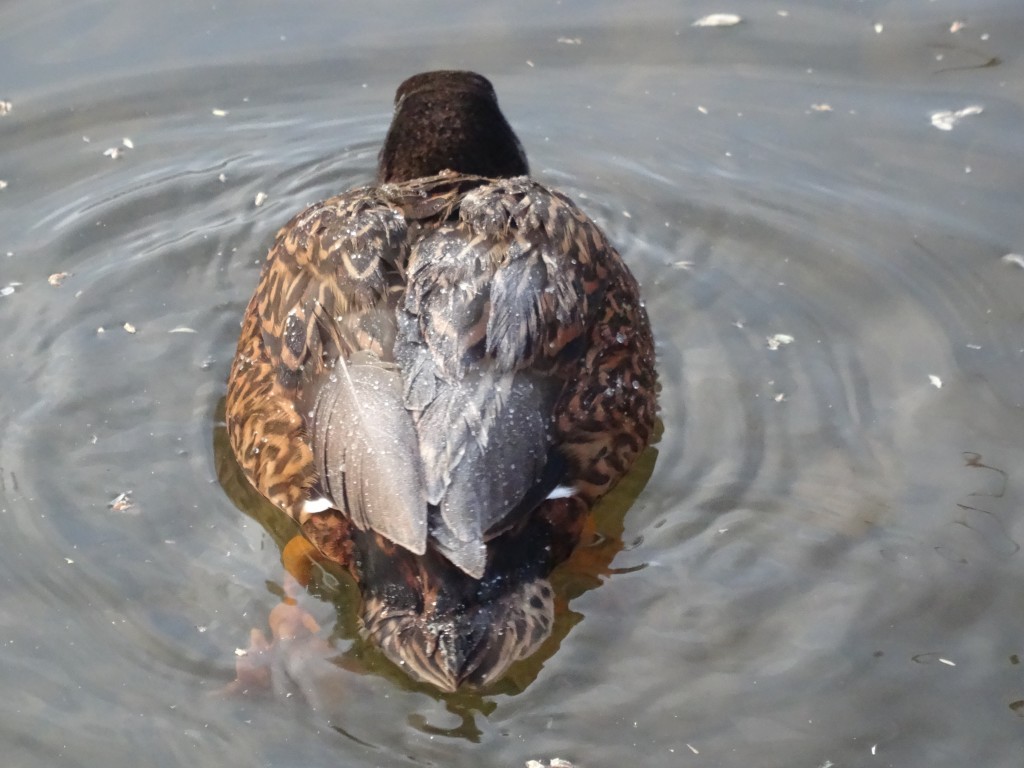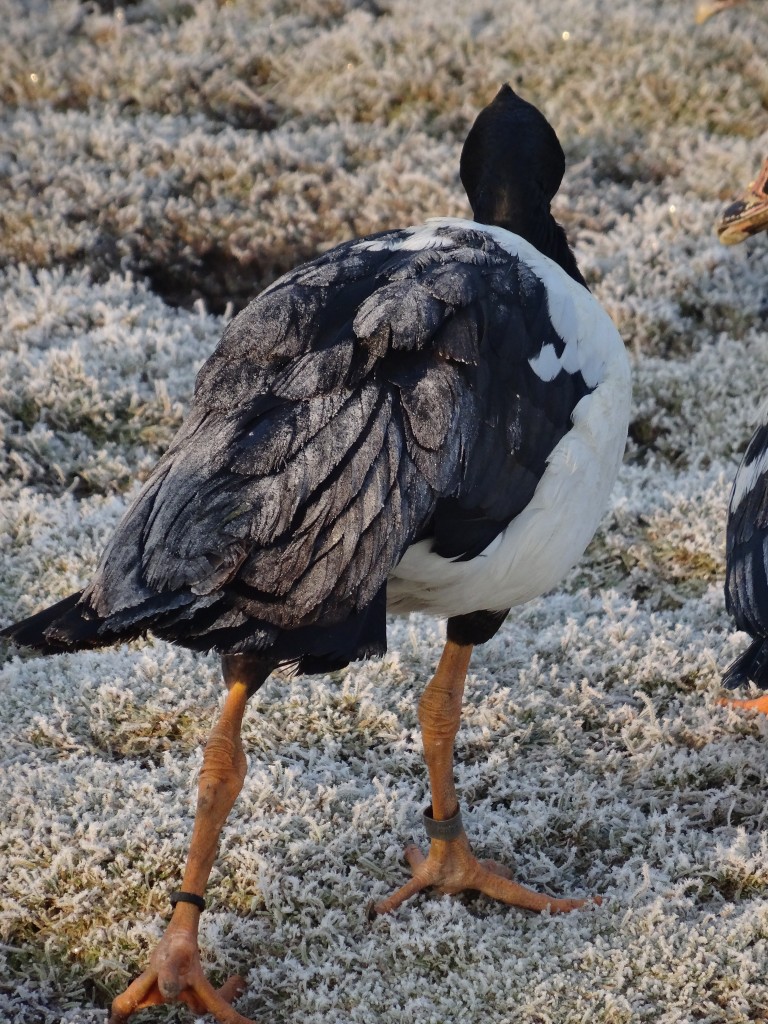Frosty mornings.
There's the persistent myth that traditionally permeates around at this time of year that the cold and rain is "nice weather for ducks." For many of the species at WWT however, this is most false!
Our UK native species and most northern or extreme southern hemisphere species are cut out for the cold and wet of winter; you only need to appeal to the qualities of an eider down duvet to confirm this. Many of the tropical and equatorial species that we exhibit however find this time of year a little more trying...
On very frosty mornings such as this, a whole new range of observations come into play for staff that want to keep their birds safe and well.
"Do all of these species get on?" This was the question that we asked ourselves when we populated this aviary, because if just one aggressive individual starts causing a stir then several of these birds could be in danger. As you can see the water body has frozen overnight, leaving just a small stretch of open water kept open only by the dedicated roosting of some of the aythya and diving ducks. Several of these species including the Plumed whistlers, Hooded merganser, red billed pintail, puna teal and Freckled duck are perching sleepers, prefering to get up and out in order to kip the night away. This water body has most likely been kept open solely through the activity of the canvasback, Argentine ruddy and ring necked duck. As a result all of the birds have a clear pool within which to be fed from and feed, if they can cooperate for long enough. Inevitably these birds have a pecking order as to who can eat first and so this competition is exacerbated when the ice closes in. As staff members we have to ensure that we feed sufficiently and over a large enough surface to area to avoid disagreements. On an icy pond the diving ducks cannot risk diving in case they lose their way. Thankfully in this exhibit the only grumpy bird is the male ruddy-headed goose (not pictured) and he prefers not to get his ankles wet!
A Laysan duck the morning after looks something like this. These sweet little ducks inhabit just 2 tiny pacific islands and as such would never experience life like this in their native habitat. The reality of evolution however provides an historic protection for this little duck. Anas laysanensis is part of the huge genus known as Anas which includes the mallard, wigeon and teal. Their radiation spreads all around the world and they are part of the most mobile and opportunistic of duck groups. The likelihood is that the Laysan came to the pacific islands by chance immigration, and so despite several thousands of years of continuing evolution that determined their size and camouflage, these intrepid little ducks still maintain a vestige of Northern hardiness! And so the little Laysan teal doesn't mind the cold too much, as witnessed below by the frosty feathers of this little male.
The magpie goose on the other hand is in a genus all of its own. It is unique in it's evolutionary strain. As such they have evolved 100% for their native coastal flora and fauna and as we all know, the savannahs of New Guinea and northern Australia do not have snow and ice... Anseranas semipalmata are unique amongst wildfowl but whilst this is all very exciting, it is excruciating to watch these gorgeous geese deal with the cold weather. You just need to look at their legs and feet to see that they have very little if not any insulation in their legs whatsoever, as these birds have evolved to be lightweight. They have barely any down either, in fact the Magpie goose is so poor at feather maintenance that they have evolved to be more oily than most wildfowl; covering their feathers in a smelly oil from their preen gland in lieu of a tight-knit preen. As a result we keep a very keen eye on the forecast, and will always deliver a mountain of straw to the magpie geese in advance of cold nights. In addition we will always feed them in an Emperor feeder or trough so as to avoid their need to stand in water to feed and catch a chill. Keeping a Magpie goose in captivity is a remarkable and enjoyable experience as they can exceed 20+ years in age but you have to keep them safe from frostbite. It's a very common problem to see older geese with a missing toe nail or two, but bar knitting them little leg warmers we do the best we can.
When the dangers of frosty morning have been Aviculturally managed, you can finally settle down and enjoy the beauty of it. There is nothing better than bringing your camera to Slimbridge on a bright crisp morning.





